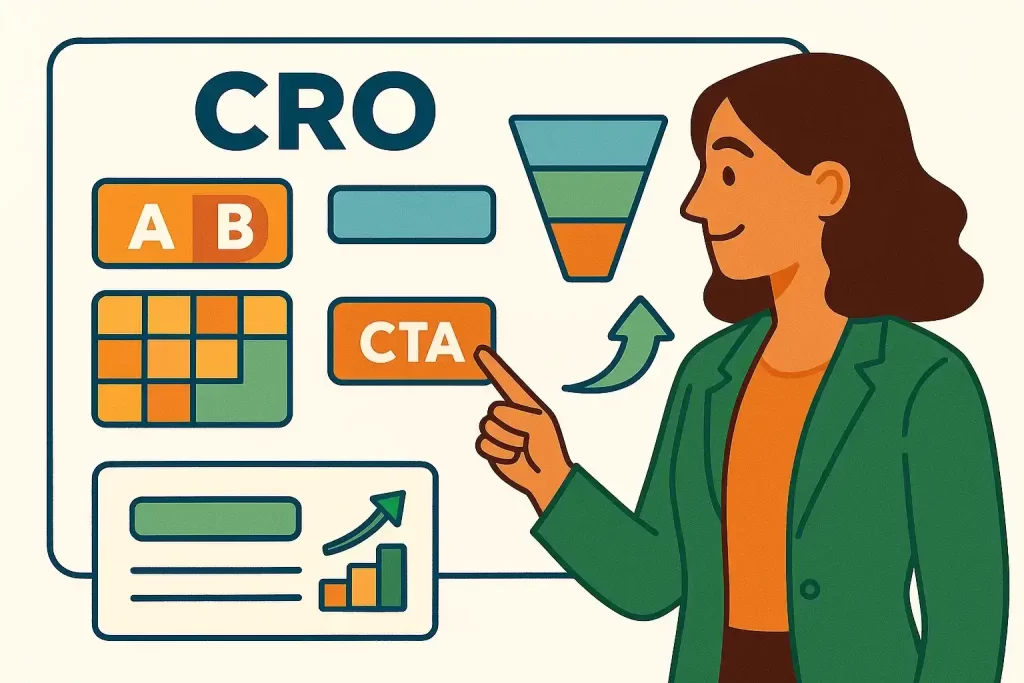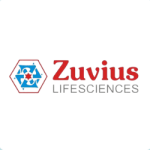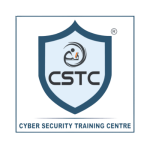Conversion Rate Optimization (CRO): A Guide for Growth
You’ve spent time and money getting people to your website. However, if most of those visitors leave without buying, signing up, or calling, you’re losing money. Conversion Rate Optimization (CRO) is the process of fixing that problem. Simply put, it’s about getting more of the people already visiting your site to take the action you want. It’s working smarter, not harder.

What is Conversion Rate Optimization (CRO) and Why It Matters
A conversion is any action you want a visitor to take. This could be filling out a contact form, downloading a guide, or making a purchase. Your conversion rate is the percentage of visitors who complete that action. Therefore, if 100 people visit your site and 2 people buy, your rate is 2%.
The CRO Advantage
When you focus on CRO, you don’t need to spend more money on ads or SEO to grow. Instead, you make your current traffic work better. For example, if you can raise your conversion rate from 2% to 4%, you’ve effectively doubled your sales without incurring the cost of a single new visitor. Consequently, CRO is one of the most cost-effective strategies for small and growing businesses.
Simple Steps to Start Conversion Rate Optimizing
You don’t need a team of experts to start improving your site. Instead, focus on key areas that have the biggest impact on your sales funnel optimization.
1. Simplify Your Forms
Long, confusing forms scare people away. Therefore, ask only for the essential information you need to start the sales process.
- Tip: If you need a phone number, tell the visitor why you need it (e.g., “We need your number to confirm your consultation time.”). Also, if you shorten a form from ten fields to four, you’ll almost always see an immediate jump in submissions.
2. Make Your Calls-to-Action (CTAs) Clear
A Call-to-Action (CTA) is the button or link that tells the visitor what to do next (e.g., “Buy Now,” “Get a Free Quote”).
- Be Specific: Avoid vague buttons like “Submit.” Instead, use action-oriented language like “Download Your Checklist Now” or “Book My Free Audit.” Furthermore, the button text should tell the user exactly what they will get after clicking.
- Color & Placement: Ensure your button color stands out from the rest of the page. Also, place the CTA high enough on the page so users don’t have to scroll to see it.
3. Build Trust with Social Proof
People trust what others say more than what a company says about itself. Therefore, use reviews and testimonials heavily.
- Place Proof Near the Conversion: Put short, compelling testimonials right next to your contact form or product checkout button. Because people often hesitate right before buying, a positive review can push them forward.
- Use Visuals: If possible, use a client’s picture or even a short video testimonial. Truly, seeing a real person builds more confidence than just reading text.
Test Everything (A/B Testing Basics)
CRO is not about guessing; it’s about testing. You can use tools to show different versions of a page to different visitors to see which one performs better. This is called A/B Testing.
- One Change at a Time: Always test only one change at a time (e.g., change only the button color, not the color and the text). Otherwise, you won’t know which change caused the result.
- Simple Tests to Start: Try testing two different headlines on your main service page. Also, test two different images on your product page. In conclusion, starting small and testing often is the key to mastering CRO.
Ready to unlock more sales from your current traffic? Let’s discuss a tailored CRO strategy for your business!
❓ Frequently Asked Questions (FAQ): Conversion Rate Optimization (CRO)
How long does it take to see results from CRO?
Simple fixes (shorter forms, clearer CTAs, removing friction) can lift conversions within a week because they improve the experience for visitors you already have. For statistically valid A/B test results, plan on 2–4 weeks, depending on traffic and baseline conversion rate.
What is a good conversion rate?
It varies by industry and goal. As ballparks: e-commerce sales often target 1–3%, while B2B lead gen forms may aim for 5–10%. The best benchmark is your current rate; optimize to consistently beat it and track improvements by page/template.
What is a “micro-conversion”?
A micro-conversion is a meaningful step toward the main goal, e.g., watching a demo, starting checkout, adding to cart, or subscribing to a newsletter. Tracking these milestones helps pinpoint where users drop off and which changes move more people to the final conversion.















